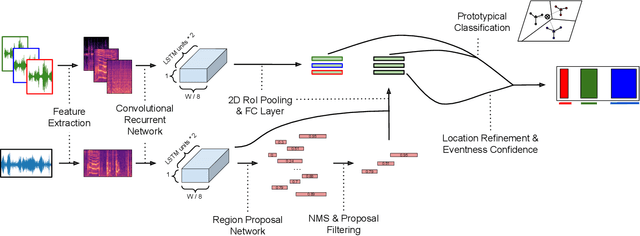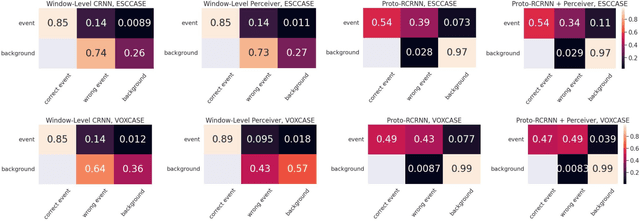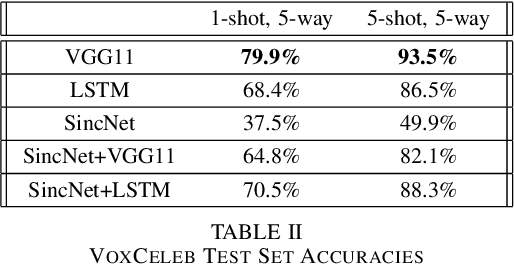Piper Wolters
Molmo and PixMo: Open Weights and Open Data for State-of-the-Art Multimodal Models
Sep 25, 2024



Abstract:Today's most advanced multimodal models remain proprietary. The strongest open-weight models rely heavily on synthetic data from proprietary VLMs to achieve good performance, effectively distilling these closed models into open ones. As a result, the community is still missing foundational knowledge about how to build performant VLMs from scratch. We present Molmo, a new family of VLMs that are state-of-the-art in their class of openness. Our key innovation is a novel, highly detailed image caption dataset collected entirely from human annotators using speech-based descriptions. To enable a wide array of user interactions, we also introduce a diverse dataset mixture for fine-tuning that includes in-the-wild Q&A and innovative 2D pointing data. The success of our approach relies on careful choices for the model architecture details, a well-tuned training pipeline, and, most critically, the quality of our newly collected datasets, all of which will be released. The best-in-class 72B model within the Molmo family not only outperforms others in the class of open weight and data models but also compares favorably against proprietary systems like GPT-4o, Claude 3.5, and Gemini 1.5 on both academic benchmarks and human evaluation. We will be releasing all of our model weights, captioning and fine-tuning data, and source code in the near future. Select model weights, inference code, and demo are available at https://molmo.allenai.org.
On the Generalizability of Foundation Models for Crop Type Mapping
Sep 14, 2024Abstract:Foundation models pre-trained using self-supervised and weakly-supervised learning have shown powerful transfer learning capabilities on various downstream tasks, including language understanding, text generation, and image recognition. Recently, the Earth observation (EO) field has produced several foundation models pre-trained directly on multispectral satellite imagery (e.g., Sentinel-2) for applications like precision agriculture, wildfire and drought monitoring, and natural disaster response. However, few studies have investigated the ability of these models to generalize to new geographic locations, and potential concerns of geospatial bias -- models trained on data-rich developed countries not transferring well to data-scarce developing countries -- remain. We investigate the ability of popular EO foundation models to transfer to new geographic regions in the agricultural domain, where differences in farming practices and class imbalance make transfer learning particularly challenging. We first select six crop classification datasets across five continents, normalizing for dataset size and harmonizing classes to focus on four major cereal grains: maize, soybean, rice, and wheat. We then compare three popular foundation models, pre-trained on SSL4EO-S12, SatlasPretrain, and ImageNet, using in-distribution (ID) and out-of-distribution (OOD) evaluation. Experiments show that pre-trained weights designed explicitly for Sentinel-2, such as SSL4EO-S12, outperform general pre-trained weights like ImageNet. Furthermore, the benefits of pre-training on OOD data are the most significant when only 10--100 ID training samples are used. Transfer learning and pre-training with OOD and limited ID data show promising applications, as many developing regions have scarce crop type labels. All harmonized datasets and experimental code are open-source and available for download.
Satellite Imagery and AI: A New Era in Ocean Conservation, from Research to Deployment and Impact
Dec 06, 2023Abstract:Illegal, unreported, and unregulated (IUU) fishing poses a global threat to ocean habitats. Publicly available satellite data offered by NASA and the European Space Agency (ESA) provide an opportunity to actively monitor this activity. Effectively leveraging satellite data for maritime conservation requires highly reliable machine learning models operating globally with minimal latency. This paper introduces three specialized computer vision models designed for synthetic aperture radar (Sentinel-1), optical imagery (Sentinel-2), and nighttime lights (Suomi-NPP/NOAA-20). It also presents best practices for developing and delivering real-time computer vision services for conservation. These models have been deployed in Skylight, a real time maritime monitoring platform, which is provided at no cost to users worldwide.
Zooming Out on Zooming In: Advancing Super-Resolution for Remote Sensing
Nov 29, 2023



Abstract:Super-Resolution for remote sensing has the potential for huge impact on planet monitoring by producing accurate and realistic high resolution imagery on a frequent basis and a global scale. Despite a lot of attention, several inconsistencies and challenges have prevented it from being deployed in practice. These include the lack of effective metrics, fragmented and relatively small-scale datasets for training, insufficient comparisons across a suite of methods, and unclear evidence for the use of super-resolution outputs for machine consumption. This work presents a new metric for super-resolution, CLIPScore, that corresponds far better with human judgments than previous metrics on an extensive study. We use CLIPScore to evaluate four standard methods on a new large-scale dataset, S2-NAIP, and three existing benchmark datasets, and find that generative adversarial networks easily outperform more traditional L2 loss-based models and are more semantically accurate than modern diffusion models. We also find that using CLIPScore as an auxiliary loss can speed up the training of GANs by 18x and lead to improved outputs, resulting in an effective model in diverse geographies across the world which we will release publicly. The dataset, pre-trained model weights, and code are available at https://github.com/allenai/satlas-super-resolution/.
Satlas: A Large-Scale, Multi-Task Dataset for Remote Sensing Image Understanding
Nov 28, 2022



Abstract:Remote sensing images are useful for a wide variety of environmental and earth monitoring tasks, including tracking deforestation, illegal fishing, urban expansion, and natural disasters. The earth is extremely diverse -- the amount of potential tasks in remote sensing images is massive, and the sizes of features range from several kilometers to just tens of centimeters. However, creating generalizable computer vision methods is a challenge in part due to the lack of a large-scale dataset that captures these diverse features for many tasks. In this paper, we present Satlas, a remote sensing dataset and benchmark that is large in both breadth, featuring all of the aforementioned applications and more, as well as scale, comprising 290M labels under 137 categories and seven label modalities. We evaluate eight baselines and a proposed method on Satlas, and find that there is substantial room for improvement in addressing research challenges specific to remote sensing, including processing image time series that consist of images from very different types of sensors, and taking advantage of long-range spatial context. We also find that pre-training on Satlas substantially improves performance on downstream tasks with few labeled examples, increasing average accuracy by 16% over ImageNet and 5% over the next best baseline.
Proposal-based Few-shot Sound Event Detection for Speech and Environmental Sounds with Perceivers
Jul 28, 2021



Abstract:There are many important applications for detecting and localizing specific sound events within long, untrimmed documents including keyword spotting, medical observation, and bioacoustic monitoring for conservation. Deep learning techniques often set the state-of-the-art for these tasks. However, for some types of events, there is insufficient labeled data to train deep learning models. In this paper, we propose novel approaches to few-shot sound event detection utilizing region proposals and the Perceiver architecture, which is capable of accurately localizing sound events with very few examples of each class of interest. Motivated by a lack of suitable benchmark datasets for few-shot audio event detection, we generate and evaluate on two novel episodic rare sound event datasets: one using clips of celebrity speech as the sound event, and the other using environmental sounds. Our highest performing proposed few-shot approaches achieve 0.575 and 0.672 F1-score, respectively, with 5-shot 5-way tasks on these two datasets. These represent absolute improvements of 0.200 and 0.234 over strong proposal-free few-shot sound event detection baselines.
A Study of Few-Shot Audio Classification
Dec 02, 2020



Abstract:Advances in deep learning have resulted in state-of-the-art performance for many audio classification tasks but, unlike humans, these systems traditionally require large amounts of data to make accurate predictions. Not every person or organization has access to those resources, and the organizations that do, like our field at large, do not reflect the demographics of our country. Enabling people to use machine learning without significant resource hurdles is important, because machine learning is an increasingly useful tool for solving problems, and can solve a broader set of problems when put in the hands of a broader set of people. Few-shot learning is a type of machine learning designed to enable the model to generalize to new classes with very few examples. In this research, we address two audio classification tasks (speaker identification and activity classification) with the Prototypical Network few-shot learning algorithm, and assess performance of various encoder architectures. Our encoders include recurrent neural networks, as well as one- and two-dimensional convolutional neural networks. We evaluate our model for speaker identification on the VoxCeleb dataset and ICSI Meeting Corpus, obtaining 5-shot 5-way accuracies of 93.5% and 54.0%, respectively. We also evaluate for activity classification from audio using few-shot subsets of the Kinetics~600 dataset and AudioSet, both drawn from Youtube videos, obtaining 51.5% and 35.2% accuracy, respectively.
 Add to Chrome
Add to Chrome Add to Firefox
Add to Firefox Add to Edge
Add to Edge